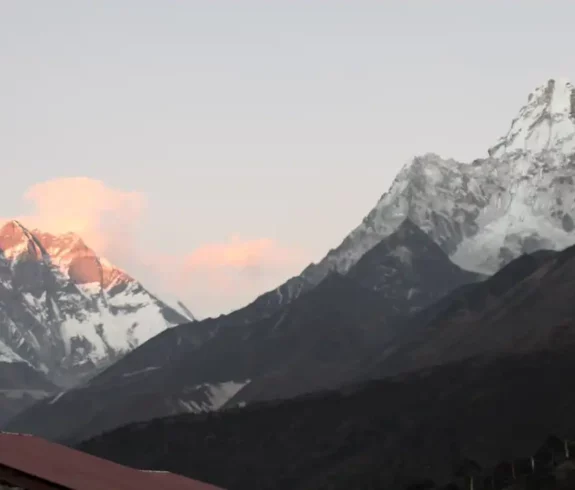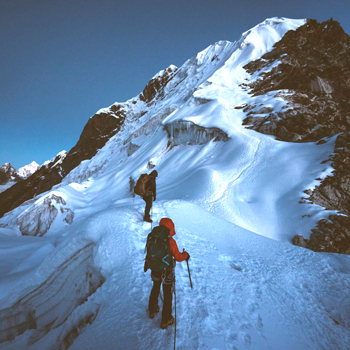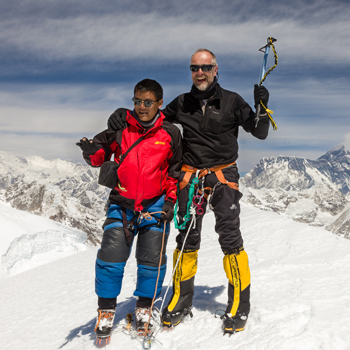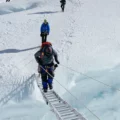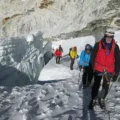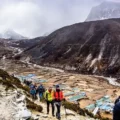Nestled in the Everest region of Nepal, Island Peak, which measures 6,189 m (20,305 ft) in height, is one of the most famous mountainous summits. It is located close to the Village of Chhukung and is a fine peak for those aspiring mountaineers keen on testing their climbing skills. The proximity and accessibility of Island Peak climbing from Chhukung make it an ideal choice for those seeking a rewarding Himalayan adventure.
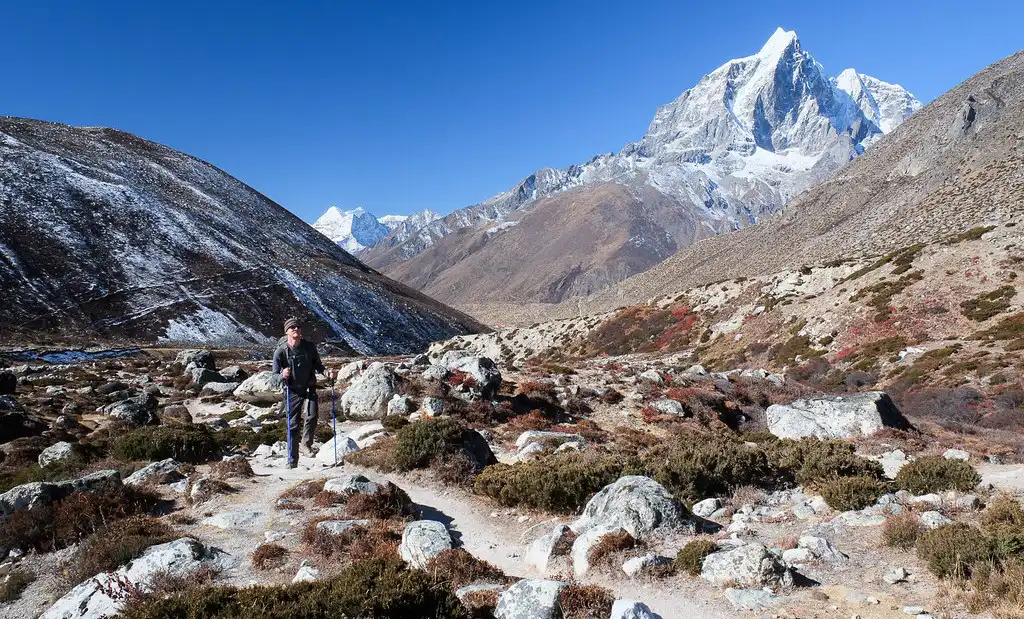
The peak, also known as Imja Tse, was ascended in 1953 by an English expedition on the verge of climbing Mount Everest. Over the years, it became one of the most sought-after trekking peaks, presenting a challenging but attainable experience for individuals with average climbing skills.
It is indisputable that, for most climbers, Island Peak offers stunning climatic conditions, varying topography, and the excitement of reaching the top of a Himalayan mountain. The course includes crossing glaciated areas, going up snow slopes, and bouldering, which provides a captivating climbing experience for sports lovers across the globe.
Preparation for Island Peak Climbing from Chhukung
Preparing adequately for your Island Peak climbing from Chhukung is critical to a successful and enjoyable climb. Preparing for this climb requires rigorous physical training, acquiring the necessary permits, and choosing the best time of year for the expedition.
Necessary Training and Physical Preparation
- Endurance and Cardio: Develop stamina by jogging, cycling, or swimming. Aim for sessions that last at least 30 minutes three times a week.
- Strength Training: Build muscle strength, particularly in your legs, back, and arms, which are crucial for climbing. Utilize exercises such as squats, deadlifts, and pull-ups.
- Altitude Acclimatization: Spend time at high altitudes to acclimate your body, reducing the risk of altitude sickness during your climb.
- Skills Training: Familiarize yourself with essential mountaineering skills, including crampons, ropes, and ice axes, which are vital for the varying terrains you will encounter during the Island Peak climbing from Chhukung.
Required Permits and Local Regulations
- Climbing Permit: Secure an Island Peak Climbing Permit. Prices vary with the season, but they are essential for legal access to the mountain.
- Sagarmatha National Park Entry: This permit is required to enter the region and contribute to conservation efforts.
- Local Municipality Permit: All trekkers in the region must obtain a Khumbu Pasang Lhamu Rural Municipality Permit.
- Permit Acquisition: Arrange all permits through trekking agencies or in Kathmandu before your trek to avoid delays.
Best Time of Year to Attempt the Climb
- Spring (March to May): This season offers stable weather and clear paths, making it the most suitable time for Island Peak climbing from Chhukung.
- Autumn (September to November): Another favorable period with dry conditions and optimal visibility for climbing.
- Off-Peak Seasons: Monsoon and winter months should be avoided due to harsh weather conditions, which can pose significant risks.

Chhukung is the Starting Point for Island Peak Climbing
Chhukung, a small Sherpa village in the Khumbu region, serves as the last stop before starting on the famous Island Peak climbing from Chhukung. Situated at an impressive altitude of 4,730 meters, Chhukung offers basic but essential facilities for climbers, including guesthouses and gear rental shops.
Overview of Chhukung
- Altitude and Environment: Due to its high altitude, Chhukung, at 4,730 meters, is an excellent place for acclimatization before attempting the Island Peak climb.
- Facilities Available: Despite its remote location, the village provides essential services such as accommodation, dining options, and climbing equipment rentals, ensuring climbers are well-prepared and comfortable.
Traveling to Chhukung from Kathmandu
Getting to Chhukung involves several steps, each crucial to ensuring a smooth start to your Island Peak climbing from Chhukung adventure.
Step 1: Flight from Kathmandu to Lukla
- The trip begins with a scenic yet thrilling flight from Kathmandu to Lukla, which takes about 40 minutes.
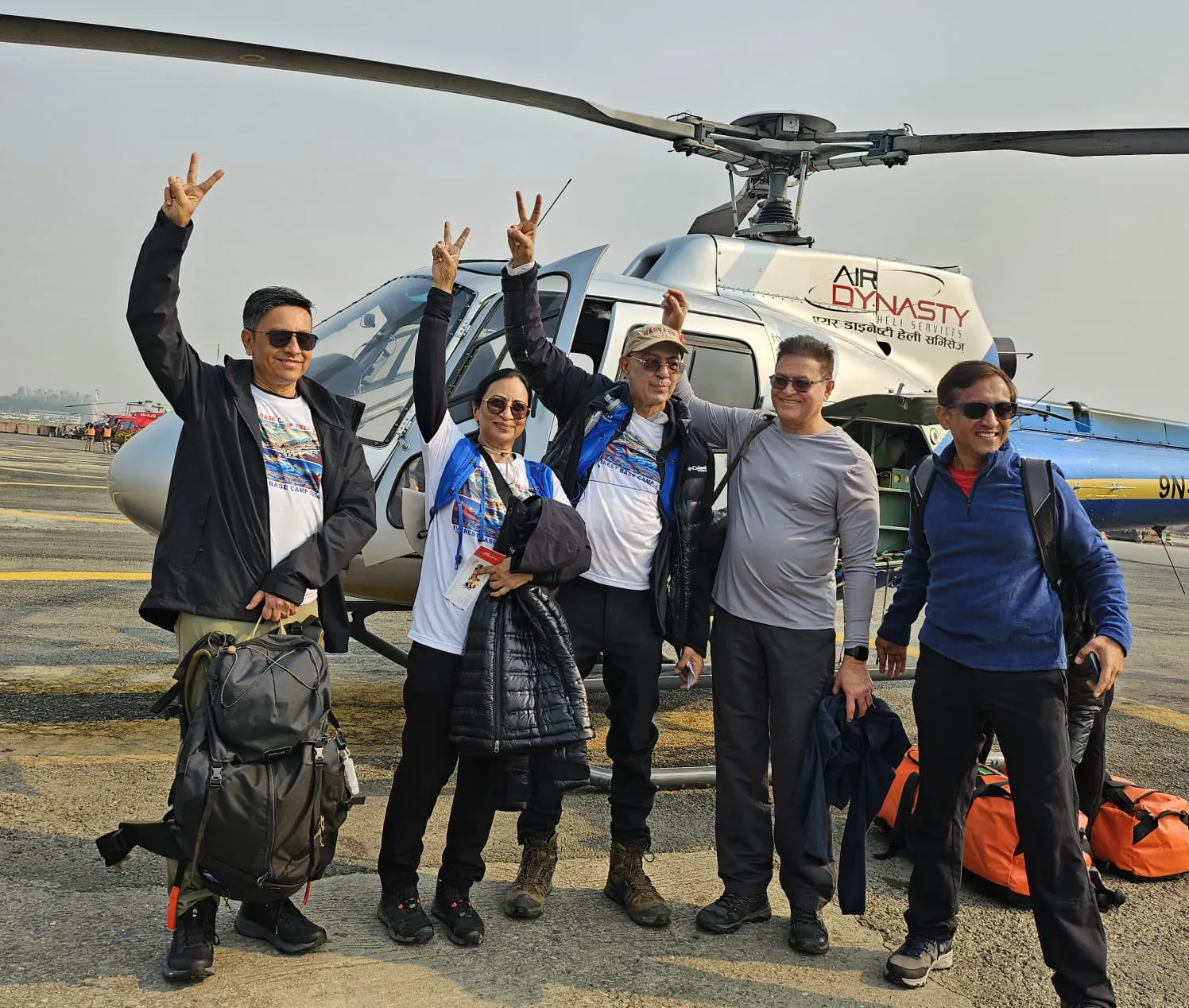
This flight is often considered one of the most dramatic short flights in the world. It lands at Tenzing-Hillary Airport, one of the highest airports globally.
Step 2: Trek to Chhukung
- From Lukla, trekkers usually follow the well-trodden path to Namche Bazaar, a significant trading hub in the Khumbu region. After acclimatizing to Namche, the route proceeds through Tengboche, Dingboche, and Chhukung.
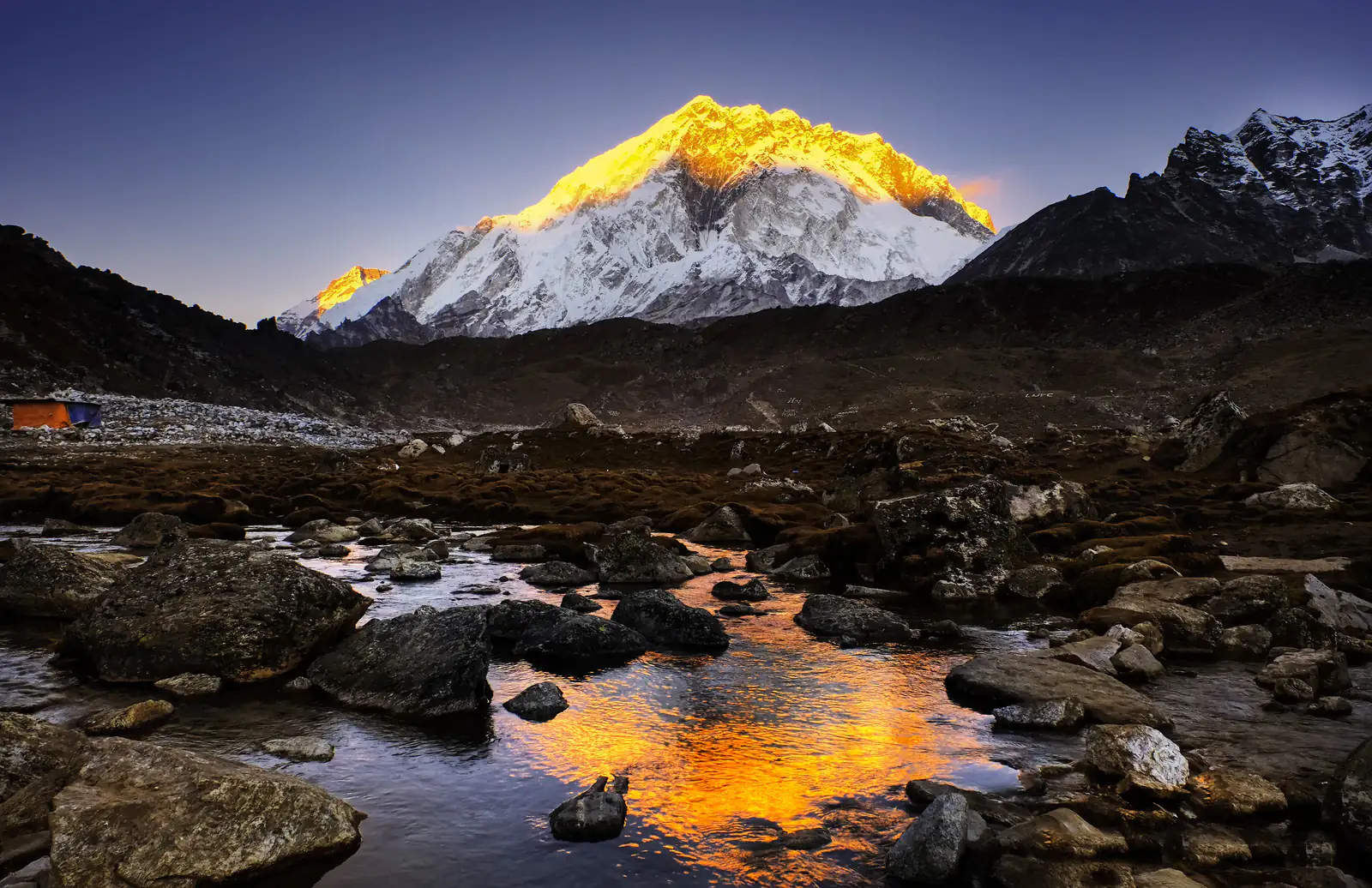
- This trek takes 3-4 days from Lukla, depending on individual pace and acclimatization stops. The trail offers mesmerizing Himalayas views and ample opportunities to adapt to the high altitude.
Detailed Itinerary for Island Peak Climbing from Chhukung
Climbing the Island Peak from Chhukung offers an exciting and challenging adventure. Below is a detailed day-by-day itinerary that outlines what climbers can expect at each stage of the ascent and return.
Day 1: Arrival at Chhukung (4,730 meters)
- Trek from Dingboche to Chhukung: This short 3-4 hour trek allows climbers to continue acclimatizing while enjoying views of Lhotse, Ama Dablam, and surrounding peaks.
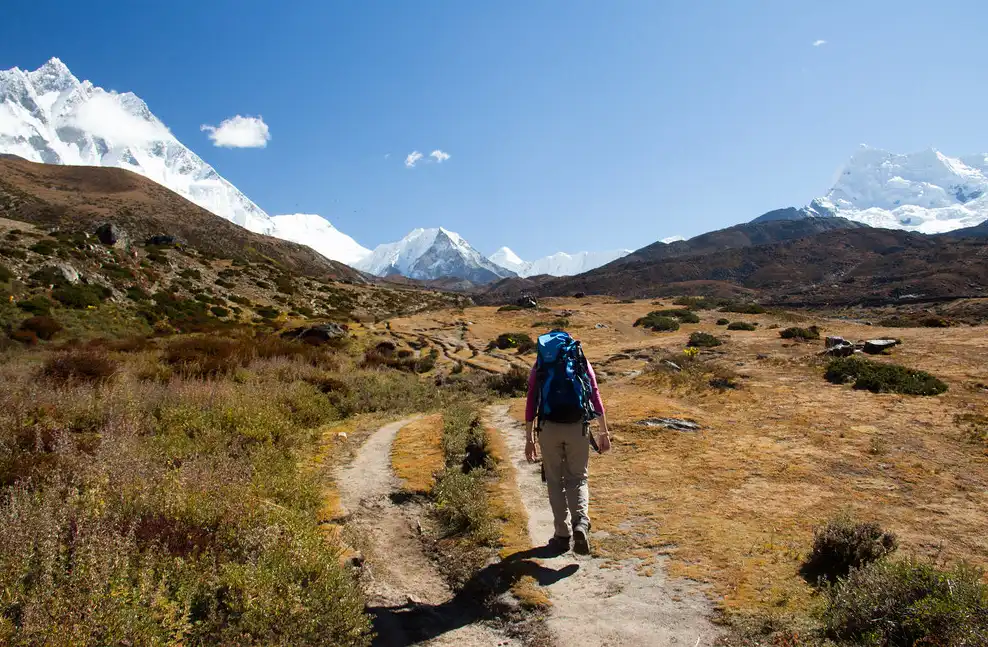
Chhukung is a small village that provides basic amenities such as guesthouses and gear rentals.
- Preparation for the Climb: Use this day to rest, hydrate, and ensure all climbing gear is in order. Guides will provide briefings to help you understand the route and technical aspects of the climb.
Day 2: Chhukung to Island Peak Base Camp (5,200 meters)
- Trekking Time: Approximately 3-4 hours.
- Highlights: The trek from Chhukung to Island Peak Base Camp is relatively moderate, with gradual elevation gain. You’ll traverse rugged landscapes with striking views of glaciers and high peaks like Makalu.
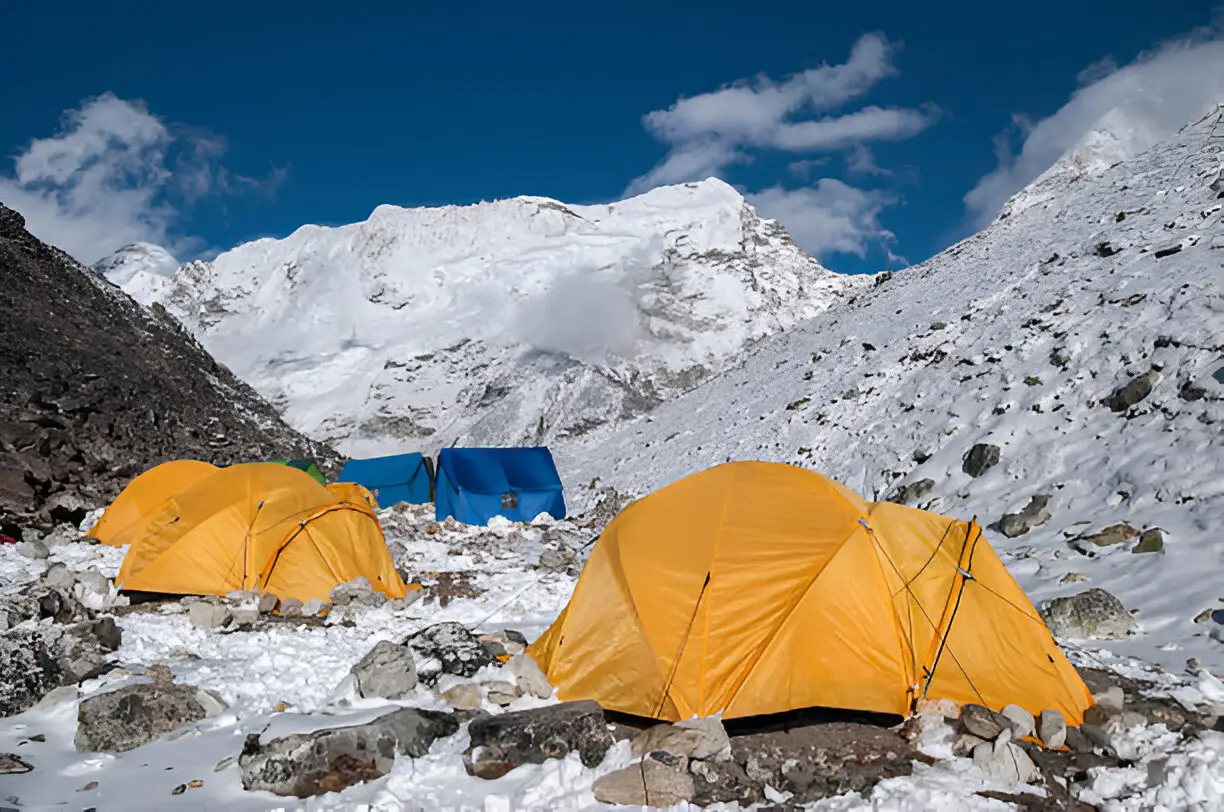
- Challenges: Though the trek isn’t technically arduous, altitude may cause mild discomfort. Keep drinking water and maintain a consistent speed.
- Accommodation: Overnight in tents at Base Camp, with final preparations for the summit push.
Day 3: Island Peak Base Camp to Summit (6,189 meters) and Back to Base Camp
- Summit Push: The day begins early, around 1-2 a.m., to climb to the summit. The climb involves crossing glaciers, ascending ice walls, and walking on steep snow slopes.
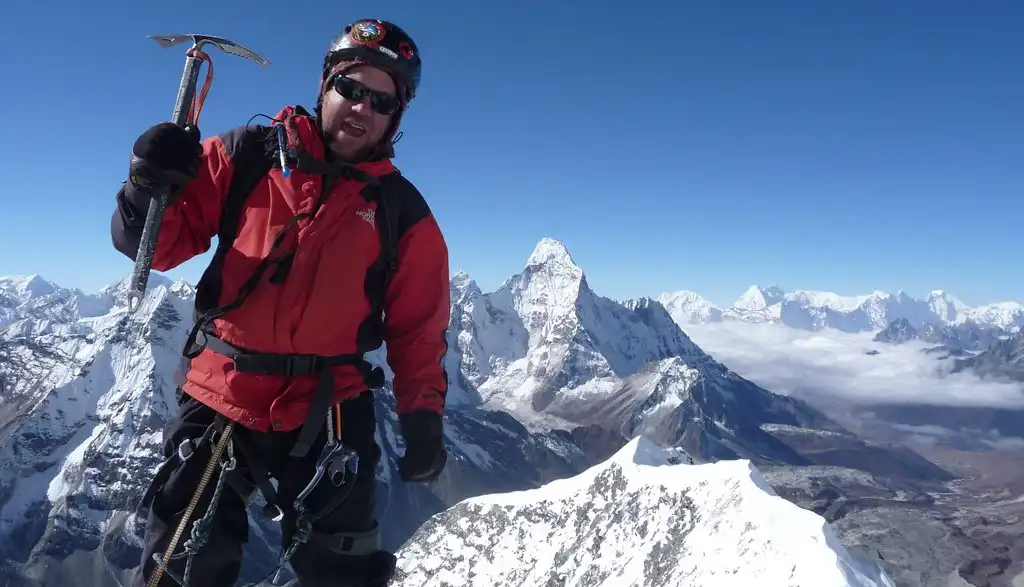
- Challenges: Crampons and ice axes are required to navigate the crevasses and icy terrain. Ropes may be used for extra support on the steeper sections.
- Summit Views: The summit offers breathtaking panoramic views of Lhotse, Nuptse, Baruntse, and the surrounding Himalayas, a well-deserved reward for the effort.
- Descent: After enjoying the summit, climbers return to Island Peak Base Camp for a well-earned rest.
- Trekking Time: Approximately 10-12 hours, depending on conditions and climber pace.
Day 4: Island Peak Base Camp to Chhukung
- Return Trek: After the successful summit, the trek back to Chhukung takes about 4-5 hours.
- Highlights: With the main challenge behind you, this descent is more relaxed, allowing time to reflect on the accomplishment and enjoy the beauty.
- Rest and Recovery: Upon reaching Chhukung, relax in the guesthouses and savor a warm meal to celebrate the achievement.
Day 5: Chhukung to Dingboche or Namche Bazaar
- Trek Back: Depending on your itinerary, you can return to Dingboche or continue to Namche Bazaar.
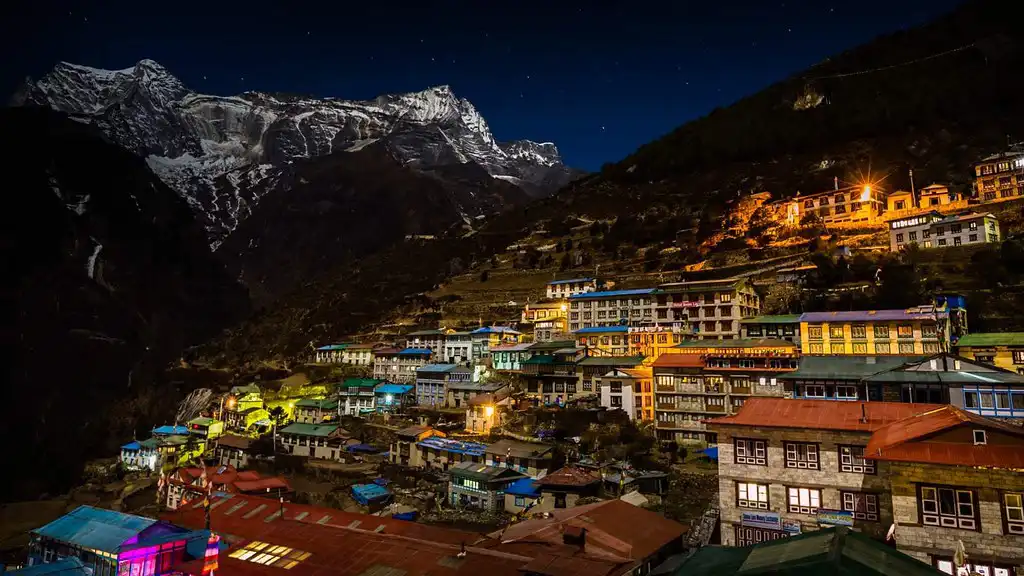
- Highlights: The trek back offers stunning views of the Khumbu Valley and the satisfaction of completing the Island Peak climbing from Chhukung.
Safety and Risk Management for Island Peak Climbing from Chhukung
Ensuring safety on your Island Peak climbing from Chhukung adventure is paramount. This segment covers common risks and emergency procedures to help climbers manage unexpected situations effectively.
Common Risks Associated with Island Peak Climbing
- Altitude Sickness: The primary risk is altitude sickness, characterized by headaches, nausea, and dizziness. Prevent this by acclimatizing properly and ascending slowly.
- Weather Conditions: Sudden weather changes can create hazardous climbing conditions. Monitor forecasts and listen to your guide’s advice to avoid getting caught in bad weather.
- Falls and Injuries: Slippery ice, loose rocks, and steep snow slopes increase the risk of falls and related injuries. To enhance safety, utilize proper climbing gear such as crampons, harnesses, and helmets.
- Glacial Crevasses: Hidden crevasses pose significant dangers. Always rope up on glaciated parts of your climb to safeguard against fall-throughs.
Emergency Procedures and Local Rescue Facilities
- Immediate Response: If an accident occurs, ensure everyone knows basic first aid. Carry a well-equipped medical kit and learn how to use it.
- Communication is Key: Always have reliable means of calling for help, such as satellite phones or radios, since mobile coverage is unreliable or non-existent.
- Rescue Services: Familiarize yourself with the operation of local rescue services. Helicopter rescues are available but can be costly and weather-dependent.
- Insurance: Ensure appropriate travel and rescue insurance covers high-altitude climbing and helicopter evacuation if necessary.
- Local Guides: Employing a local guide who intimately knows the Island Peak climbing from the Chhukung route can be a lifesaver. They are trained to deal with emergencies and efficiently access local rescue facilities.
Costs and Budgeting for Island Peak Climbing from Chhukung
Managing expenses effectively is crucial for anyone planning Island Peak climbing from Chhukung. Efficiently understanding the average costs and budgeting can make your climbing experience both memorable and affordable.
Average Cost Breakdown
The cost of Island Peak expeditions from Chhukung can differ significantly based on the season, the level of service you opt for, and the duration of your trip. Here’s a general breakdown to help you plan:
- Permits: The cost includes the Island Peak Climbing Permit, the Sagarmatha National Park Permit, and the Khumbu Pasang Lhamu Rural Municipality Entry Permit. Depending on the time of year, the price can vary between $250 and $350.
- Guides and Porters: For safety, it is mandatory to hire a qualified guide. Guide fees can range from $25 to $40 per day, while porters (if required) will cost around $15 to $25 per day.
- Accommodation: Costs will vary along the route, with tea houses costing around $5 to $10 per night for basic lodging. Due to its remoteness, prices may be higher at Chhukung.
- Food and Drink: Daily expenses for food and drink can range from $20 to $30 as you ascend due to the increasing cost of transporting goods to higher elevations.
- Miscellaneous: Always set aside funds for miscellaneous expenses such as gear rental, personal supplies, and tips for your guides and porters.
Tips for Budgeting and Reducing Costs
- Book in Advance: Securing permits and hiring guides and porters ahead of time can often secure better rates. Traveling outside of peak season can also lead to lower costs.
- Group Travel: Joining a group can significantly cut costs by sharing expenses for guides, porters, and accommodation.
- Gear and Equipment: While quality climbing gear is crucial, consider renting heavier items like sleeping bags, down jackets, and even crampons in Kathmandu or Chhukung instead of buying them if you plan on using them sparingly.
- Manage Daily Expenses: Set a daily meal budget and stick to it. Food prices increase the higher you go; however, sticking to local cuisine rather than Western dishes can lower your food expenses.
- Plan for Unexpected Costs: Always have a contingency fund for unexpected costs, such as potential delays or emergencies.
Cultural Aspects of Island Peak Climbing from Chhukung
Exploring the cultural dimensions of Island Peak climbing from Chhukung enriches the experience, allowing climbers to connect with the local Sherpa community’s traditions and customs. Understanding and respecting these cultural elements enhances your climbing and helps preserve the region’s unique heritage.
Insights into the Local Culture and Customs
The Sherpa ethnic group is famous for its cultural background and ability to climb mountains because they primarily inhabit the region of Khumbu. Their way of life is significantly shaped by Tibetan Buddhism, as is seen in the many temples and prayers in the surrounding area.
- Religious Practices: Along the trek, you will encounter many chortens (stone monuments), mani walls (stone structures carved with Buddhist mantras), and prayer wheels. Passing these sacred objects on your right is customary, respecting their religious significance.
- Festivals: Participating in or observing local festivals can be a profound cultural experience. Events like Mani Rimdu (a Sherpa dance drama festival) and Dumje (a celebration of community and kinship) provide insight into Sherpa’s life and spirituality.
- Hospitality: Sherpas are known for their warmth and hospitality. Engaging with locals through a shared cup of tea or a meal is polite and opens up dialogues that enrich your understanding of their way of life.
Respecting and Engaging with Local Traditions
As a visitor, showing respect for local customs and traditions is crucial, and there are several ways you can engage positively with the community:
- Dress Appropriately: When visiting monasteries or sacred places, always wear appropriate attire, covering your shoulders and knees to show courtesy.
- Language: Learning a few basic phrases in the local language can go a long way in showing respect and fostering goodwill. Simple words like “Namaste” (Hello) and “Dhanyabad” (Thank you) can make a meaningful impact.
- Environmental Respect: The Khumbu region is culturally and ecologically significant. Practice Leave No Trace principles to keep the environment as pristine as you found it. Locals sincerely appreciate this, as they view the natural landscape as sacred.
- Economic Contribution: Support local economies by hiring local guides and porters, buying local products, and using local services. It enhances your experience and contributes to the community’s well-being.
- Cultural Sensitivity: Respect the local culture by asking permission before taking photographs, especially during religious ceremonies or of local people.
Environmental Considerations for Island Peak Climbing from Chhukung
Island Peak climbing from Chhukung requires a conscientious approach to environmental conservation due to the fragile ecosystem of the Himalayas. Climbers must adopt sustainable practices and follow Leave No Trace principles to maintain the region’s pristine beauty.
Impact of Climbing on the Environment
The surge in popularity of high-altitude trekking and climbing in Nepal presents significant challenges, including managing waste and reducing ecological damage. Climbing activities contribute to:
- Trail Erosion: The heavy traffic of trekkers and climbers leads to soil erosion, which endangers plant life and alters the landscape.
- Waste Accumulation: Failing to properly dispose of waste like food wrappers, equipment, and human waste leads to pollution that endangers local wildlife.
- Water Contamination: Careless waste management risks contaminating local water sources, posing health hazards to humans and wildlife.
Practicing Leave No Trace Principles
To reduce your environmental footprint while climbing, adhere to these Leave No Trace principles:
- Plan and Prepare: Avoid potential resource damage and ensure safety through proper preparation, which includes utilizing established trails and campsites.
- Travel and Camp on Durable Surfaces: Stay oriented to the marked paths and avoid entering the undisturbed zones to avert low-lying plants and greenery damage.
- Waste Disposal Techniques: All refuse, including food scraps, must be removed. These should be used where available, or human waste should be eaten in deep holes 6-8 inches below ground level, at least 200 feet from water bodies, walking paths, and camping sites.
- Leave What You Find: Respect the natural and cultural artifacts you encounter, and do not disturb historical sites or remove natural objects.
- Minimize Campfire Impacts: Use existing fire rings or pans and keep fires manageable by using only small sticks that can be broken by hand.
- Give Wildlife Its Due: Keep your distance from wildlife, and more importantly, refrain from feeding them to keep their behavior and health intact.
- Be Considerate of Other Visitors: Show respect to fellow trekkers by being polite and yielding on trails, ensuring everyone can enjoy their experience.
Conclusion: Island Peak Climbing from Chhukung
Island Peak climbing from Chhukung offers an exhilarating adventure that tests physical endurance and mental strength. Climbers can experience the thrill of summiting one of Nepal’s most popular trekking peaks while enjoying breathtaking views of the surrounding Himalayan giants like Lhotse, Nuptse, and Ama Dablam. The ascent combines challenging terrain, including glaciers and snow-covered slopes, which offer an authentic mountaineering experience.
Above and beyond climbing fitness, climbers can relate better to the Himalayan culture and environment. The hospitality and culture of Sherpas are excellent, and the adventure is more interesting. In addition, the trip imparts excellent values such as teamwork, patience, and love for nature.
